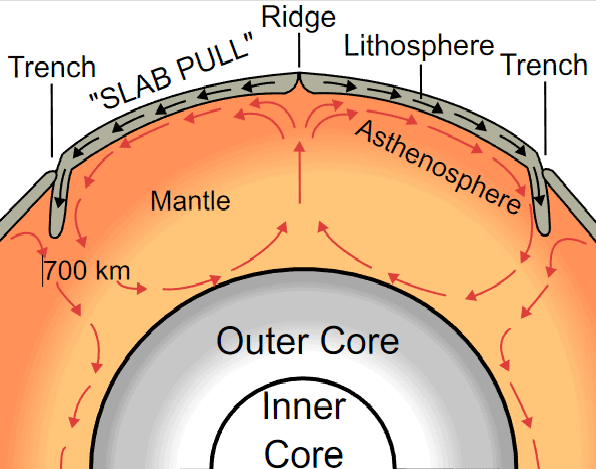The Earth can be divided into four main layers: the solid crust on the outside, the mantle, the outer core, and the inner core. Out of them, the mantle is the thickest layer, while the crust is the thinnest layer.
The Earth’s structure
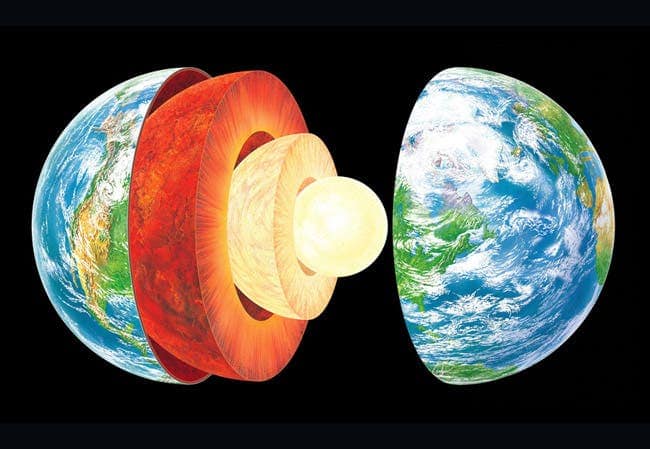
The Earth’s structure can be defined in several ways, but in general, we see the Earth as having a solid crust on the outside, an inner and an outer core, and the mantle in between. The crust’s thickness varies between some 10 km and just over 70 km, having an average of about 40 km. The core has, in total, a radius of 3500 km, but it is generally viewed as two distinct parts:
- the solid inner core, with a radius of 1220 km;
- the viscous outer core, with a radius of 2300 km.
The mantle’s thickness is about 2900 km – so if you consider the Earth’s core as one big thing, then the core is the “thickest layer” (though has a bigger radius is probably a better way of saying it) – but the idea of a separate outer and inner core is generally accepted.
The Mantle — thickness and composition
The mantle comprises about 83% of the Earth’s volume and around 68% of its mass. It is divided into several layers, based on different seismological characteristics (as a matter of fact, much of what we know about the mantle comes from seismological information — not from what we’ve observed directly).
The upper mantle extends from where the crust ends to about 670 km. Even though this area is regarded as viscous, you can also consider it as formed from rock: a rock called peridotite, to be more precise. A peridotite is a dense, coarse-grained igneous rock, consisting mostly of olivine and pyroxene, two minerals only found in igneous rocks.
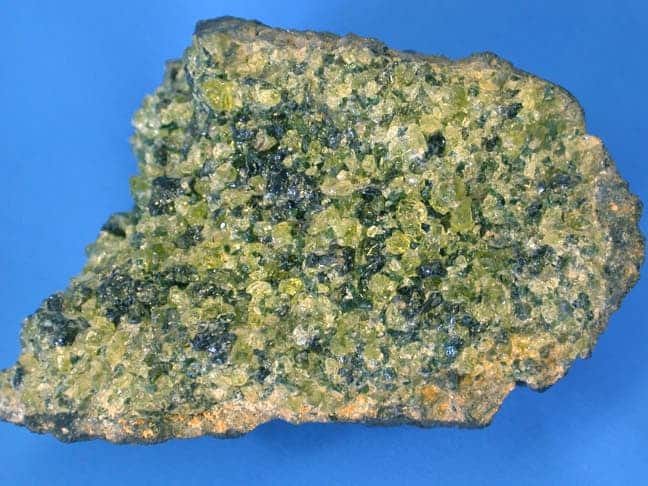
But the Earth’s structure gets even more complicated. The crust is divided into tectonic plates, and those tectonic plates are actually thicker than the crust itself because they also encompass the top part of the mantle. The crust and that top part of the mantle (going down to 200 kilometers below the surface) is called the asthenosphere.
Scientific studies suggest that this layer has physical properties that are different from the rest of the upper mantle. Namely, the rocks in this part of the mantle are more rigid and brittle because of cooler temperatures and lower pressures. This is a justification for considering the asthenosphere as a layer, but in general the crust and the mantle are dealt with separately. Another way to think about it is that the crust and mantle are distinguished by composition, whereas the lithosphere (which includes the brittle upper portion of the mantle and the crust) and asthenosphere are defined by a change in mechanical properties.
The upper mantle is what causes tectonic plates to flow. This section comprises of silicates (rocks mostly made up of silicon and oxygen) that are partially melted. This mixture is solid, but in time, it can flow. This flow is essential for life on Earth.
When the heat rises and spreads out from the deeper parts of the planet to the upper mantle, convection currents are formed. These currents move around hot material creating areas of upwelling and downwelling, which pull the tectonic plates around, causing them to interact and sometimes collide with each other.
This is what creates new material on the surface of the planet and recycles some of the existing material. Without this process, there would be no plate tectonics, and without plate tectonics, life as we know it wouldn’t exist — or at the very least, would be very different.
The upper mantle also acts as a “reservoir” for molten rock, enabling it to rise to the surface through cracks and fissures in the Earth’s crust, through volcanic processes. Different types of magma can form, depending on the temperature, chemistry, and pressure of the rock. Some magma is rich in silica, which makes it more viscous, while other magma is low in silica, making it more fluid.
Below that, there is the lower mantle – ranging from 670 to 2900 kilometers below the Earth’s surface. This is the area with the highest temperatures and biggest pressures, reaching all the way to the outer core.
The lower mantle is perhaps the least understood layer of our planet. We can’t survey it directly, we can only infer information about it from earthquakes and physics experiments where we simulate the conditions in the lower mantle. More recently, simulation experiments were also used as a tool to study this part.
We do know that the density and temperature of the mantle increase gradually towards the center, as does the velocity of seismic waves (a key parameter for studying the Earth’s internal structure).
Mantle Trivia: Even though you can consider the mantle as molten rock or magma, modern research found that the mantle has between 1 and 3 times more water than all the oceans on Earth combined.
How can we study the mantle?
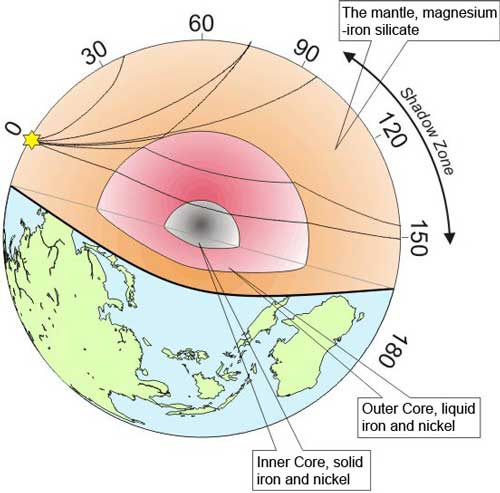
Pretty much all the practical geology we do takes place at the crust. All the rock analysis, the drilling… everything we do is done in the crust. The deepest drill ever done is some 12 km below the surface… so how can we know the mantle?
As mentioned earlier, most of what we know about the mantle comes from seismological studies. When big earthquakes take place, the waves propagate throughout the Earth, carrying with them information from the layers they pass through – including the mantle. Furthermore, modern simulations in the lab showed how minerals likely behave at those temperatures and pressures, and we also have indirect gravitational and magnetic information, as well as studies on magma and crystals found on the surface. However, the bulk of the information comes from seismic analysis.
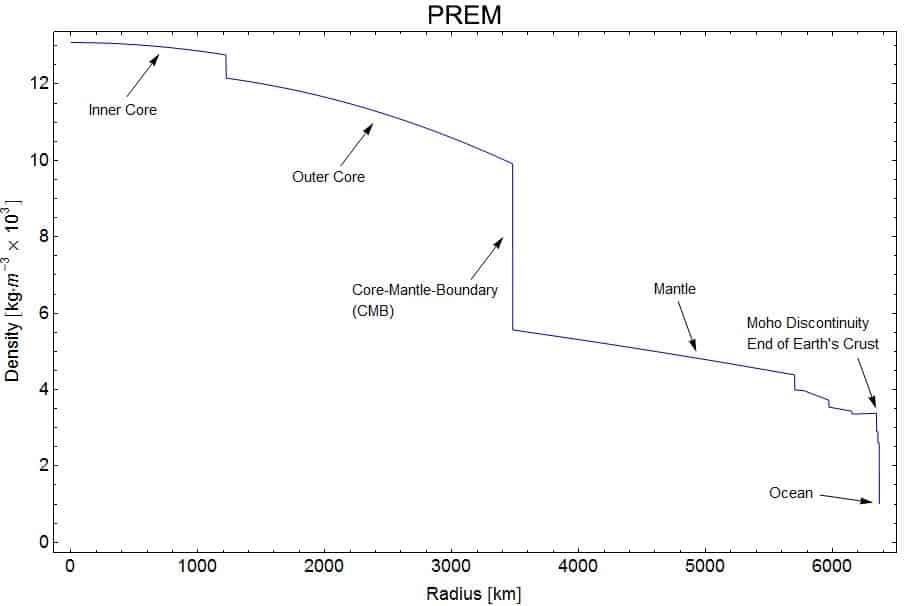
Seismic waves, just like light waves, reflect, refract, and diffract when they meet a boundary – that’s how we know where the crust ends and where the mantle begins, and the same goes for the mantle and the core. The waves also behave differently depending on different properties, such as density and temperature.
In the mantle, temperatures range between 500 to 900 °C (932 to 1,652 °F) at the upper boundary with the crust; to over 4,000 °C (7,230 °F) at the boundary with the core. Thanks to the huge temperatures and pressures within the mantle, the rocks within undergo slow, viscous-like transformations there is a convective material circulation in the mantle.
How material flows towards the surface (because it is hotter and therefore less dense) while cooler material goes down. This process is still a matter of scientific debate, and there may be aspects of it we don’t fully understand (or don’t understand at all).

Another interesting fact about the mantle is that earthquakes that happen close to the surface, in the crust, are a result of stick-slip faulting. But earthquakes also happen deeper, at depths of over 300 km (the deepest recorded earthquake was 751 km deep). But rocks in the mantle can’t fault because of all the pressure, so how do earthquakes in the mantle take place?
It’s not clear why this happens, but several mechanisms have been proposed, including dehydration, thermal runaway, and mineral phase change. Basically, one mineral can morph into another when conditions change, and this can happen suddenly, in a fault-type fashion.
This is just a reminder of how little we still know about our planet: we’ve only scratched the surface of the thinnest layer, the crust. The deeper parts of our planet, the mantle, and the core, hide many more mysteries.
